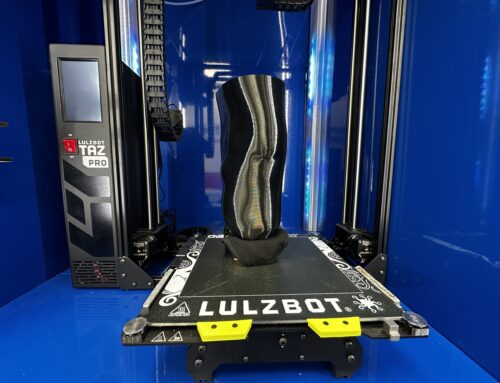Vacuum Volume Management System for Transtibial and Transfemoral Prostheses: Optimizing Comfort and Performance

Enhancing Prosthetic Experience with Advanced Vacuum Volume Management
Imagine a prosthetic limb that fits seamlessly, allowing you to move with confidence and comfort. If you’re someone who uses transtibial or transfemoral prostheses, you understand the importance of a well-fitting limb that provides stability and enhances your mobility. The key to achieving this level of comfort and performance lies in a cutting-edge technology: the Vacuum Volume Management System. In this article, we’ll delve into the details of this innovative solution that revolutionizes the prosthetic experience, making strides in both comfort and function.
In simple terms, a Vacuum Volume Management System is a technology used in prosthetics to create a secure and stable fit by utilizing negative pressure within the socket.
In this article, we’ll explore how this system works, its benefits, and its impact on both transtibial and transfemoral prosthetic users. Whether you’re a prosthetic user or someone interested in learning more about this technology, here’s everything you need to know.
A Detailed Explanation: How the Vacuum Volume Management System Works
Creating a Secure Fit with Negative Pressure
The Vacuum Volume Management System is designed to address a common challenge in prosthetics: maintaining a secure and comfortable fit throughout various movements. This technology utilizes negative pressure, also known as vacuum, to achieve this goal. Here’s how it works:
- Socket Interface: The interface between the residual limb and the prosthetic socket is crucial. It’s here that the Vacuum Volume Management System comes into play. A specialized liner is placed over the residual limb, and the socket is then fitted over it.
- Evacuation of Air: Once the socket is secured, a pump is used to remove air from the space between the liner and the socket. As the air is evacuated, negative pressure is created, resulting in a snug fit. This prevents any unwanted movement or friction during activities.
- Enhanced Comfort and Function: The vacuum effectively distributes the forces and pressures exerted on the residual limb during movement. This not only enhances comfort but also improves overall prosthetic function, allowing users to engage in a wide range of activities with confidence.
Benefits of the Vacuum Volume Management System
- Stability: The vacuum technology eliminates the common issues of socket slippage or movement, providing users with a secure and stable fit.
- Comfort: The even distribution of pressure reduces discomfort and the risk of pressure sores, enhancing the overall prosthetic experience.
- Improved Functionality: Users can enjoy greater freedom of movement and engage in various physical activities without compromising on comfort.
Maintenance and Care
To ensure the longevity and effectiveness of the Vacuum Volume Management System, regular maintenance is essential. This includes proper cleaning of the liner and socket components, as well as checking for any wear and tear. Consulting with a prosthetist for routine check-ups and adjustments is recommended.
Exploring Different Vacuum Volume Management Systems
Active vs. Passive Systems
There are two main types of Vacuum Volume Management Systems: active and passive.
Active Systems
Active systems utilize an electronic pump to create and maintain the vacuum. These systems often come with adjustable settings, allowing users to fine-tune the level of negative pressure based on their comfort and activity level. The electronic components require a power source, usually a rechargeable battery.
Passive Systems
Passive systems, on the other hand, don’t require electronic components. Instead, they rely on a mechanical valve that is manually adjusted to create the vacuum. These systems are simpler in design and may be preferred by users who want a more straightforward solution.
Choosing the Right System for You
Selecting the appropriate Vacuum Volume Management System depends on individual preferences, activity levels, and any specific requirements. Consulting with a prosthetist is essential to determine which system aligns with your needs.
Maintaining Your Vacuum Volume Management System
Proper maintenance is crucial to ensure the longevity and effectiveness of your Vacuum Volume Management System.
Cleaning and Hygiene
Regularly clean the liner and socket components according to the manufacturer’s guidelines. This prevents the buildup of debris and bacteria, maintaining a hygienic environment.
Checking for Leaks
Periodically inspect the components for any signs of leaks or damage. A compromised system can affect the vacuum’s performance and your overall comfort.
Regular Prosthetist Visits
Schedule routine appointments with your prosthetist for thorough check-ups and adjustments. They can address any issues and make necessary changes to optimize your prosthetic fit.
Final Thoughts
In this article, we’ve delved into the world of Vacuum Volume Management Systems, a technology that has transformed the prosthetic experience for transtibial and transfemoral prosthetic users. By harnessing the power of negative pressure, these systems provide unparalleled comfort, stability, and freedom of movement. Whether you’re navigating your daily life or pursuing your passions, a well-fitted prosthetic limb can make a world of difference. Embrace the possibilities that Vacuum Volume Management Systems offer and step confidently toward an enhanced prosthetic journey.
Frequently Asked Questions
Q: Are Vacuum Volume Management Systems suitable for all types of prosthetic limbs? A: While Vacuum Volume Management Systems can be used for both transtibial and transfemoral prostheses, it’s essential to consult with a prosthetist to determine the best solution for your specific needs.
Q: Can I adjust the level of negative pressure in an active Vacuum Volume Management System? A: Yes, active systems often come with adjustable settings, allowing users to customize the level of negative pressure for optimal comfort and performance.
Q: How often should I have my Vacuum Volume Management System checked by a prosthetist? A: It’s recommended to schedule regular check-ups with your prosthetist, typically every few months, to ensure that the system is functioning correctly and to make any necessary adjustments.
OPENING HOURS
| Mon – Fri | 8:00 – 4:30 |
| Saturday | CLOSED |
| Sunday | CLOSED |






